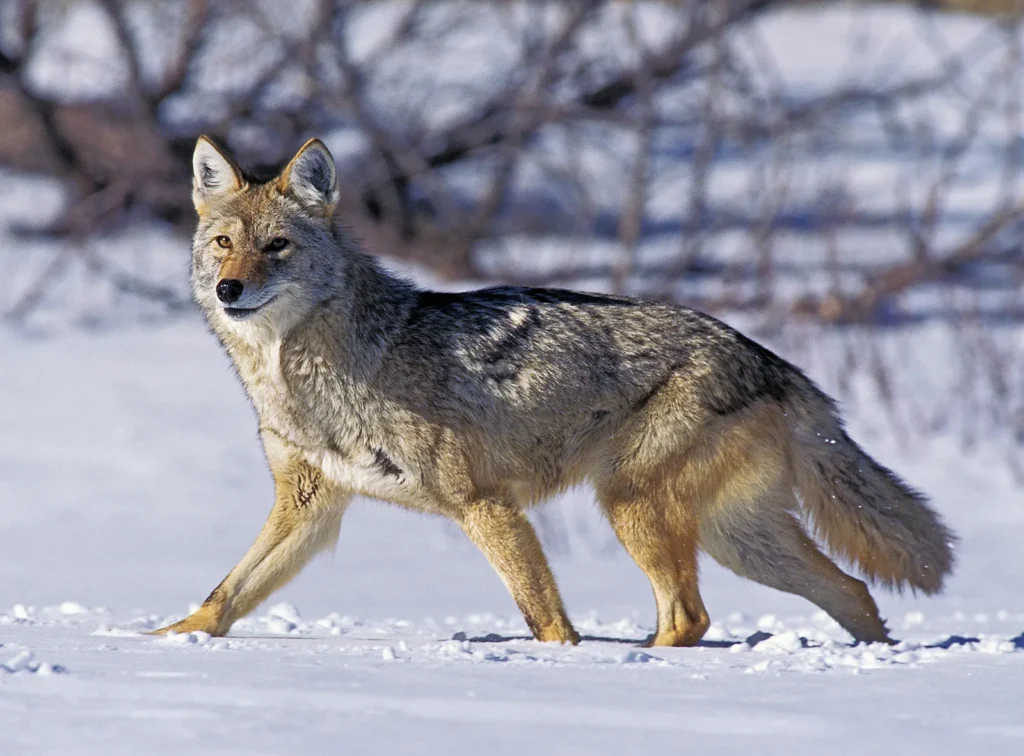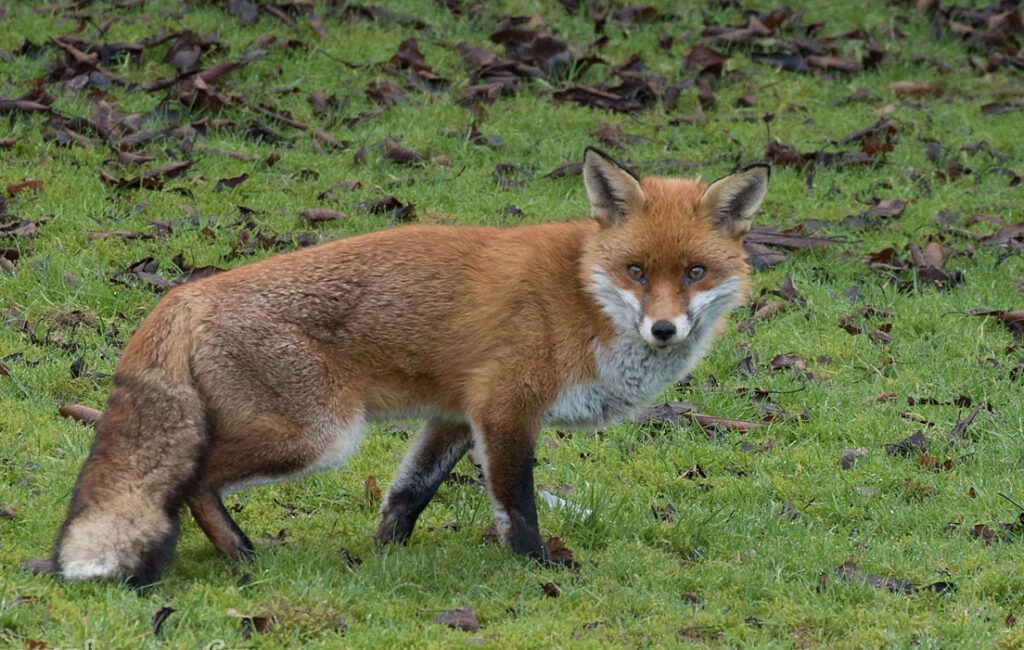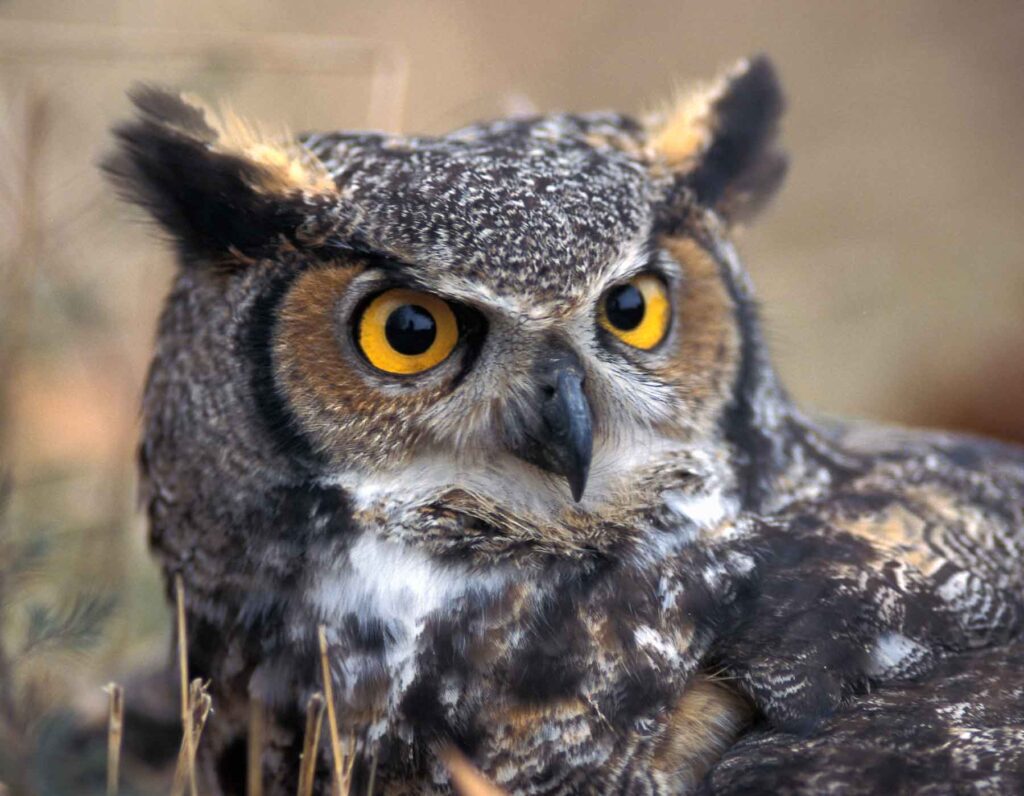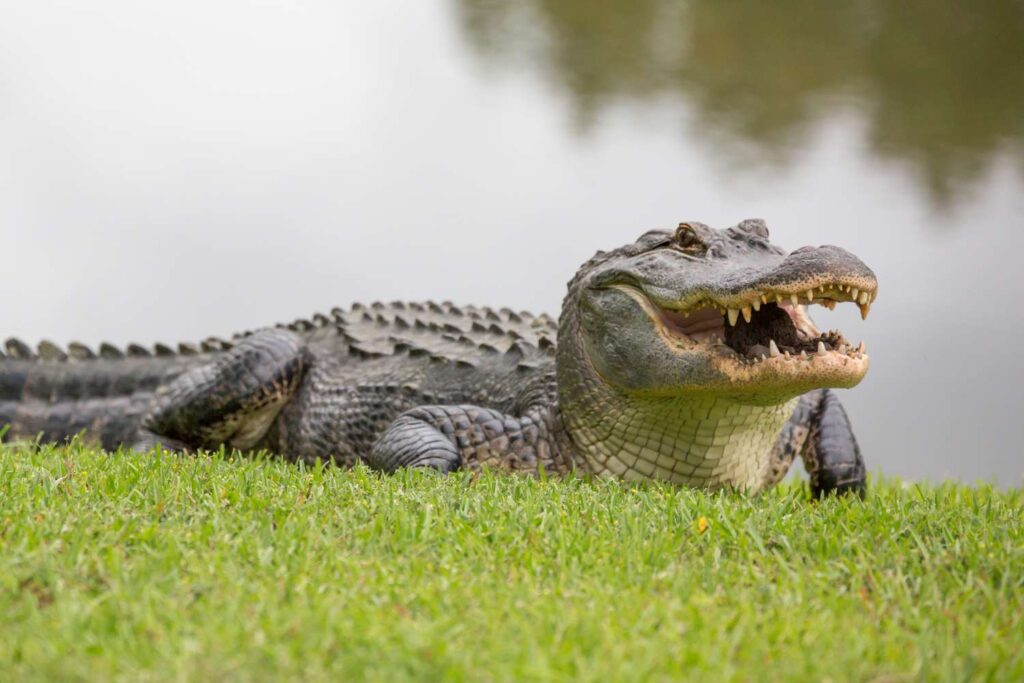Curious about the culinary preferences of beavers? Well, you’re in for a wild ride! In this captivating blog post, we’ll dive into the adventurous world of these industrious creatures and uncover the top 10 predators that have a taste for beavers. From the stealthy lynx to the cunning coyote, and even the unlikely alligator, these hungry hunters are always on the lookout for a delicious beaver feast. So, grab a snack (preferably not beaver-related) and prepare to be amazed by nature’s menu. Let’s explore what eats beavers, shall we?
Unraveling the Food Chain: Who Preys on the Industrious Beaver?
Renowned for their exceptional dam-building abilities and diligent nature, beavers play a vital role in many ecosystems. Their activities not only create rich habitats that support diverse wildlife, but also help to purify water and control floods. Yet, despite their importance and impressive engineering feats, beavers are not exempt from the harsh realities of the food chain.
These industrious creatures, small in size but large in impact, face a myriad of threats in the wild. Their predators are diverse, ranging from stealthy, night-time hunters to powerful, apex predators. Here is a list of 10 animals that have beavers on their menu, shedding light on the intricate dynamics of nature’s balance.
| Predator | Method of Hunting |
|---|---|
| Lynx | Uses its sharp sight and stealth to ambush beavers |
| Wolverines | Relies on its strength and tenacity to overpower beavers |
| Wolves | Hunts in packs to corner and capture beavers |
| Otters | Engages beavers in water, using its agility to its advantage |
| Coyotes | Utilizes cunning and group hunting tactics to catch beavers |
| Foxes | Employs stealth and surprise to ambush unsuspecting beavers |
| Mountain Lions | Uses its power and speed to overpower beavers |
| Bears | Relies on its sheer strength to kill and eat beavers |
| Owls | Targets beavers using its sharp sight and silent flight |
| Alligators | Attacks beavers in water, using its size and power to its advantage |
| Humans | Hunts beavers for their fur and meat |
Understanding the role of beavers in the food chain and their relationship with their predators gives us a glimpse into the delicate balance of ecosystems. Yet, the story doesn’t end here. Let’s dive deeper into each predator’s unique hunting strategy and discover the survival challenges faced by our industrious beavers.
The Elusive Lynx: A Feline Hunter of Beavers
Imagine a feline predator, sleek and silent, its keen eyes locked onto a beaver. This isn’t your everyday house cat, but the formidable Lynx, a top predator of beavers. Among the various species of lynx, the Red Lynx, also known as the bobcat, is particularly adept at hunting these industrious rodents.
Check out: What Eats Kangaroos? Unveiling the Top 6 Predators and Surprising Herbivorous Non-Predators
The lynx, cloaked in a coat of reddish-brown fur, is not deterred by the beaver’s aquatic habitat. Unlike most feline species, the lynx is an excellent swimmer. It’s not uncommon for these agile hunters to swim great lengths, their powerful limbs propelling them through the water, in pursuit of a beaver meal.
Fun Fact: The lynx is one of the very few cats that can successfully prey on beavers, a testament to their exceptional hunting skills and adaptability.
How does a lynx hunt a beaver? It’s not an easy feat, given the beaver’s ability to escape predators by diving underwater or seeking refuge in their intricate lodges. The lynx, however, possesses the patience and precision of a seasoned hunter. It stalks its prey, silent and stealthy, until the moment is just right for the pounce.
The lynx’s powerful jaws and sharp teeth are perfectly designed for delivering a lethal bite, while its strong paws can swiftly knock a beaver against a flat surface. The beaver, despite its robust body and sharp teeth, stands little chance against the lynx’s surprise attack.
So, the next time you marvel at the beaver’s dam-building abilities or its role in shaping ecosystems, spare a thought for the lynx. This feline predator plays its part in maintaining the delicate balance of nature, reminding us that even the most industrious creatures are not exempt from the circle of life.
The Tenacious Wolverines

wolverines
Enter the world of the wolverine, a relentless predator and the most formidable foe of the beavers. Despite their unassuming size, wolverines are a force to be reckoned with, exhibiting an incredible level of tenacity and unrivaled strength. Often, they’ve been observed digging through sheets of ice, layers of frozen branches, and thick mud to reach the hidden enclaves of beavers. This relentless pursuit strikes fear into the heart of even the most secure beaver community.
Imagine a wolverine tirelessly working its way through an ice-covered landscape, the cold, harsh winter conditions not deterring it from its mission. This daunting predator is not discouraged by the defensive techniques employed by the beavers. It is a testament to the wolverine’s determination, an attribute that makes it such a formidable adversary.
Check out: What Eats Frogs? Unveiling the Hidden World of 16 Frog Predators
The wolverine’s appetite for beavers is insatiable. They have been known to consume their prey with such fervor, broaching no waste. Even in a state of decay, a beaver carcass does not escape the wolverine’s notice. This predator’s lack of discrimination in its feeding habits illustrates its adaptability and survival instincts in the harsh wilderness.
Thus, the wolverine emerges as a significant threat to the beavers, challenging their survival strategies and pushing them to adapt. Their relentless pursuit, unmatched strength, and adaptability are a testament to the predator-prey dynamics at play in the wild. This constant struggle for survival creates a balance that echoes throughout the ecosystem.
Wolves: The Cunning Hunters
In the wild, intelligence is often as valuable as strength, and no predator embodies this more than the wolf. Known for their sharp wit and quick speed, wolves have evolved into skilled hunters, having honed their craft over countless generations. The beaver, in spite of its robust defenses, is no exception to the wolf’s versatile menu.
Wolves employ a multitude of strategies to capture their prey. Their methods are not only a testament to their intelligence but also their adaptability. For instance, they are known to set clever ambushes, patiently waiting for an unsuspecting beaver to wander into their trap. Alternatively, they might use their stealth and agility to slowly creep up on a beaver, catching it off guard.
As predators, wolves are not averse to using every trick in the book. They often target vulnerable areas of the beaver’s body, using their sharp, powerful teeth to inflict fatal injuries. This methodical approach towards hunting—coupled with their pack mentality—makes wolves a formidable threat to beavers.
Read more: Are These the Most Stunning Orange Animals? See the Pictures and Decide for Yourself!
Interestingly, wolves are also known to practice what could be deemed as food conservation. They sometimes hunt in packs, enabling them to kill more than they can consume at once. The excess food is then stored away to be eaten later, ensuring that no kill goes to waste. This behavior further illustrates the wolf’s strategic and resourceful nature.
Given the wolf’s tenacity and cunning, beavers tend to avoid areas known to be frequented by these predators. This avoidance behavior is another example of the complex dynamics between predator and prey, where one’s survival strategy directly influences the other’s hunting tactics.
While lynxes and wolverines present significant threats to beavers, the wolf’s adaptability and cunning set it apart. The dance of survival between these species continues, shaping their behaviors and, ultimately, the delicate balance of life in the wild.
Otters: The Unassuming Threat
One wouldn’t typically envision otters as predators of beavers. Admittedly, their playful demeanor and aquatic frolicking can mislead us into underestimating their predatory capabilities. However, these beguiling creatures, much like the wolverines and wolves, are part of the intricate web of nature where survival often means preying on the vulnerable.
Whilst otters and beavers share common grounds—literally and metaphorically—their interactions are not always convivial. Otters, with their lithe bodies and acute senses, navigate the waterways with exceptional agility. Their diet primarily comprises amphibians and fish, but their adaptability allows them to broaden their culinary preferences.
When the rivers’ bounty is scarce, otters have been known to prey on beavers, exploiting an opportunity to satiate their hunger.
They particularly inhabit the Northern Rivers of the United States, where their paths frequently cross with beavers. In these areas, otters don’t discriminate between young and adult beavers, adding an extra layer of challenge to the beavers’ survival strategies.
Despite their shared habitat, beavers must constantly stay alert to the otters’ potential threat. Navigating this complex terrain of survival, beavers continue to adapt, demonstrating nature’s incredible resilience in face of adversity.
Coyotes: Cunning Predators of the Beaver World

coyote
Transitioning from the stealthy wolves and playful, yet dangerous otters, we now turn our attention to another significant threat in the beavers’ survival saga: the coyotes. These cunning predators, especially prevalent in Eurasia and the United States, have etched their mark as formidable adversaries of beavers.
Coyotes showcase an uncanny patience, a trait that plays a crucial role in their hunting strategy. They bide their time, waiting for beavers to venture out of the safety of their aquatic habitats. The moment a beaver steps foot on land, the coyote seizes the opportunity, capitalizing on the beaver’s vulnerability away from water.
“Coyotes are the embodiment of patience and tenacity when it comes to hunting beavers. Their strategy is a game of waiting, a testament to their survival instincts honed over generations,” says a notable wildlife expert.
While beavers are excellent swimmers, adept at maneuvering in water, they are somewhat clumsy and slow on land, a weakness that coyotes exploit. This stark contrast in agility between land and water makes beavers easy targets for these canine predators.
But why do coyotes prefer land to water? Coyotes, unlike otters and wolves, are not as comfortable in water. They are land-dwelling creatures who excel at terrestrial hunting. This preference for land over water gives them an edge when hunting beavers, as the rodents are at a distinct disadvantage outside their aquatic comfort zone.
Winter presents a particularly challenging time for beavers. Rivers freeze, forcing them to venture onto land more frequently in search of food. This increased land activity makes them more susceptible to coyote attacks, transforming the peaceful winter landscape into a battlefield of survival.
By understanding the cunning tactics of coyotes, beavers have learned to be extra cautious during their land excursions, especially in winter. The game of survival continues, with each species continuously adapting to the strategies of the other.
Foxes: Stealthy Hunters of the Beaver World

fox
Among the list of predators that pose a significant threat to beavers, foxes hold a unique place of notoriety. These wily creatures are not only adept hunters but also master strategists who know when to bide their time and strike when the opportunity presents itself.
While foxes may not have the aquatic prowess of otters or the patient land stalking technique of coyotes, they more than compensate with their agility and quick thinking. Their hunting style is part chase, part stealth. Unlike the coyotes, who patiently wait for the beavers to venture out of water, foxes are more proactive.
They are known to occasionally chase down beavers, a sight that is as thrilling as it is terrifying. The chase, however, is not the primary weapon in the fox’s arsenal. Instead, their preferred method of hunting involves stalking their prey, capitalizing on any small opening to launch a decisive attack.
Check out: What Eats Octopus? Discover the Top 12 Predators That Feast on These Clever Cephalopods!
Imagine a fox, its coat a fiery orange in the dying light of the day, eyes locked on its unsuspecting prey. The beaver, unaware of its impending danger, goes about its routine. The fox, in its characteristic stealth mode, moves closer, each step a silent promise of the impending doom. Then, in a flash of orange and a cloud of dust, the fox pounces, and the fate of the beaver is sealed.
This dangerous game of cat and mouse, or rather fox and beaver, is a harsh reminder of the survival threats that beavers face from their natural predators. As we delve deeper into the world of beavers and their predators, we realize that the threats are far from over.
The Silent Stalkers: Mountain Lions

the mountain lion
In the darkened stillness of the night, another predator joins the hunt for beavers — the elusive mountain lion, also known as the cougar. These majestic felines are not just formidable hunters, but are specialists in tracking and hunting down smaller animals, with beavers being no exception to their menu.
Mountain lions are nocturnal hunters, preferring the cover of darkness to carry out their hunting activities. This preference coincides with the beavers’ most vulnerable time — nightfall. As the sun sets and shadows lengthen, beavers venture out, unknowingly entering the hunting grounds of these silent stalkers.
Mountain lions employ a hunting technique that is both brutal and efficient. They leap onto the unsuspecting beaver, pinning it down with their strong paws. Then, with a swift and powerful bite, they break the beaver’s neck, using their heavy jaws. This rapid attack leaves the beaver with hardly any chance of escape.
What’s quite intriguing about these big cats is their food conservation strategy. Unlike other predators that consume their prey immediately, mountain lions sometimes exhibit a different behavior. After making a kill, they may bury the carcary in a shallow hole, carefully covering it with leaves and dirt. This behavior allows them to return over the next few days to feed on it, ensuring no part of their hard-earned meal goes to waste.
As we delve deeper into the survival challenges of beavers, we see that the threats are not just limited to coyotes and foxes. Mountain lions pose a significant threat as well, demonstrating the relentless circle of life in the wild.
The Powerful Threat of Bears

the black bear
In the vast wilderness where survival is a constant battle, beavers face an array of predators. Among them, one stands out due to its sheer power and preference for the aquatic rodents – the black bear.
Black bears, the most pervasive species in North America, pose a severe risk to beavers. Their strength and size classify them as apex predators, and their diet is impressively diverse. However, they show a certain fondness for beavers over many other potential prey.
The hunting strategy of a black bear is a spectacle of raw power and brutal efficiency. Unlike the cunning foxes that stalk their prey or the nocturnal mountain lions that strike under the cover of darkness, black bears employ a more direct approach. They typically kill beavers by delivering a powerful bite, strong enough to incapacitate the rodent instantly. But the bear’s attack doesn’t end there.
Following the initial assault, the bear furthers its onslaught by then hitting the already immobilized beaver against a flat surface. This method serves to ensure the prey’s demise, but it also helps to break down the prey’s body, making it easier for the bear to consume.
The fact that bears and beavers often share the same habitat, with both being keen swimmers and climbers, only increases the threat. This proximity, coupled with the bear’s preference for beavers, makes this predator one of the most significant challenges for beaver survival.
Yet, it’s this ongoing struggle against predators like bears that continues to shape the beavers’ behavior and survival strategies, ensuring the continuity of the circle of life in the wild.
The Silent Hunters: Owls

owls
As dusk falls and the shadowy canvas of night unfurls, a different kind of predator takes flight. One might not consider the seemingly serene owl, commonly known for its wisdom, to be a threat to the industrious beaver. However, owls, particularly those with sharp sight and heightened hearing capabilities, have been known to join the ranks of beaver predators.
These nocturnal hunters often capitalize on their stealth and flight ability, launching swift attacks from above. In the stillness of both day and night, it’s not the rustling of leaves or the snapping of twigs that signals danger for the beaver – it’s the eerie silence that precedes the owl’s deadly swoop.
“Owls, with their acute senses and aerial advantage, can pose a significant threat to beavers, demonstrating nature’s unforgiving food chain.”
Reports of owls actively hunting, killing, and feasting on beavers have been noted across different regions. These observations shed light on the owl’s versatility as a top predator, capable of preying on creatures both smaller and larger than themselves.
From the hushed forest canopy, the owl watches, its keen eyes tracking the beaver’s every move. In a flash of feathers and talons, the owl strikes, its surprise attack leaving little chance for the beaver to escape. This lethal combination of stealth, strength, and precision allows the owl to successfully overcome the beaver’s defenses, highlighting the unforgiving reality of the wilderness.
While the beavers’ ongoing struggles against the formidable mountain lions and black bears shape their survival strategies, the unsuspected danger from above adds another layer to their constant battle for survival. As we continue our exploration into the predators of beavers, it’s clear that the animal kingdom is a complex web of interactions where survival is a constant challenge.
Alligators

alligator
As we delve deeper into the intricate web of the animal kingdom, our attention is drawn to another formidable predator of the beaver — the alligator. These ancient reptiles have prowled the Earth’s waters for millions of years, and their predatory instincts are as sharp as ever. However, do not mistake their slow, languid movements for lethargy; when it comes to securing a meal, alligators are swift, stealthy, and deadly.
Where the habitat of the alligator and the beaver intersect, a fascinating, albeit perilous, interaction occurs. Adult alligators, with their powerful jaws and immense strength, have little difficulty overpowering a beaver if they manage to catch one. This encounter is a striking example of the survival of the fittest, where only the quickest and most agile escape unscathed.
The alligator’s hunting strategy is markedly different from the direct approach of the black bear or the aerial attacks of the owl. Alligators are masters of ambush, often lying in wait beneath the water’s surface, their eyes and nostrils the only visible signs of their presence. When an unsuspecting beaver ventures too close, the alligator lunges, clamping down on its prey with a force that few creatures can withstand.
Interestingly, juvenile alligators may find the tables turned, as they often struggle to overpower a fully grown beaver. It is a cruel irony of nature that the young of one predator may fall prey to the very creature their elders hunt.
It is important to note that while alligators do prey on beavers, this is largely opportunistic behavior. Beavers are not a staple in the alligator’s diet, but rather an occasional indulgence when the opportunity arises.
In the end, the relationship between alligators and beavers is a stark reminder of the harsh realities of the wild, where survival is a constant battle, and predators can quickly become prey. As we continue to explore the diverse predators of the beaver, we gain a deeper understanding of the complexities and challenges these industrious creatures face.
Humans: The Unpredictable Adversaries
In the animal kingdom’s relentless circle of life, humans emerge as another significant predator of beavers. While not as ruthless as owls or as stealthy as alligators, humans pose a different kind of threat, one that is unpredictable and multifaceted.
Driven by the need for sustenance and the allure of profit, humans have been hunting beavers for their rich source of protein and luxurious fur for centuries. Favored for their unique flavor, often compared to dried beef, beavers form an integral part of the diet in several communities around the globe.
“Beavers are a rich source of protein.”
However, despite the constant threat from various predators, the industrious beavers continue to thrive. Their resilience and adaptability are largely attributable to their vegetarian diet and their unparalleled expertise in building dams, providing them with a fortified habitat that offers some degree of protection.
Beavers, with their diet of aquatic plants, tree bark, and twigs, are a testament to nature’s incredible adaptability. Their dam-building skills not only provide them with protection but also play a crucial role in maintaining the natural balance within their ecosystem.
Yet, the presence of humans and their hunting practices disrupt this balance. These interactions between humans and beavers offer a glimpse into the challenges these creatures face in their struggle for survival. This constant tug of war between humans and their environment is a crucial part of the ecological balance where beavers reside.
The three biggest natural predators of beavers are lynx, wolverines, and wolves.
Yes, owls occasionally target and eat beavers due to their sharp sight and great hearing capabilities.
Bears actively hunt beavers by biting and hitting them against a flat surface.
Mountain lions or cougars are specialists in hunting down smaller animals, including beavers. They typically hunt beavers at night when they are most vulnerable.

